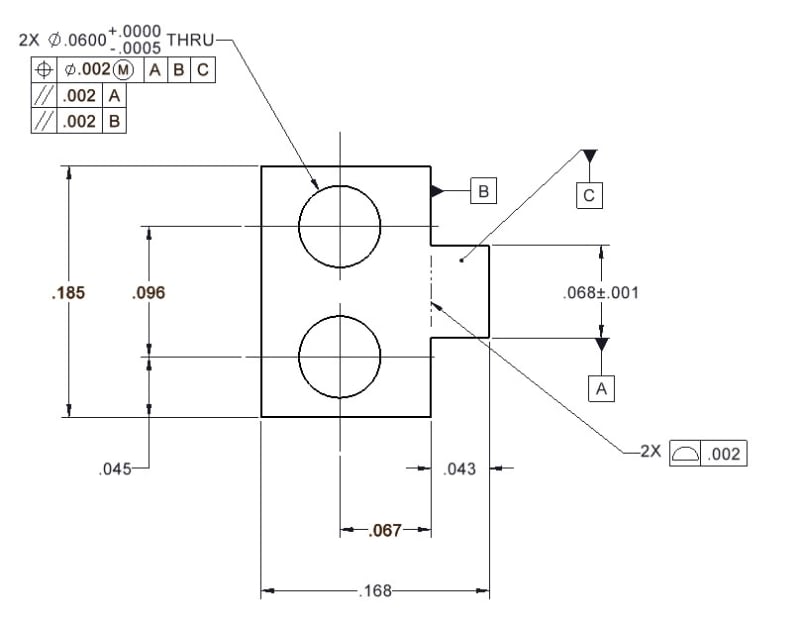Since [A] and are not qualified to anything else, we'll never know if MMC makes any appreciable difference.
Noting the MMC contribution pales in comparison that the feature cannot independently interact with all datum reference frames in a real mechanism and, as noted (thanks pmarc), at both MMC and RFS at the same time.
Had the parallelism been a refinement of the position and all used MMC or RFS, that might be useful if the features are qualified appropriately.
As it stands, the two parallelism requirements form a nominally square tolerance zone that has the same maximum dimensions as the MMC position tolerance zone, meaning much of the tolerance allowed for parallelism cannot be used, even with the additional tolerance at the larger size via the (M) allowance.
Perhaps making the original position tolerance 0.0025 RFS and eliminating the parallelism resolves the conflict between RFS and MMC.
A better statement of intent would be:
The position tolerance is because ...
This parallelism tolerance is because ...
That parallelism tolerance is because ...
Yet again - it is a shame that there isn't a free or low cost Monte Carlo driven tolerance analysis tool to provide hands-on feedback to show the effect of various dimensioning and tolerancing schemes in completed systems and capable of using known manufacturing capabilities to fine tune designs to minimize costs. For the vector loop crew - show how to include non-geometric performance contributions into that loop, for example stress and strain.


